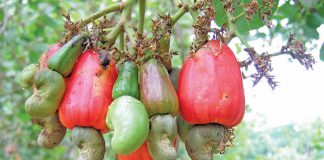Europe is a key export market for South African agricultural producers, but the ongoing economic crisis is expected to continue weakening demand. As the flow of exports to Europe slows, agri-businesses need to look for new markets.
Dr John Purchase, CEO of the Agricultural Business Chamber (ABC), says a number of these are opening up – especially in the Middle and Far East. “We can generally export maize, sugar and various fruits competitively. Table grapes and citrus probably hold the best potential to penetrate markets in Indonesia, China, Taiwan and even Japan,” he adds.
However, he cautions, there are often problems with tariff and non-tariff barriers that need to be overcome. This is where government often needs to play a critical role. Iran, Australia and Vietnam also present interesting export opportunities, according to the September 2011 International TradeProbe
put out by the National Agricultural Marketing Council (NAMC) and the International Trade division of the Department of Agriculture, Forestry and Fisheries (DAFF).
Vietnam
NAMC senior economist Sifiso Ntombela describes Vietnam as one of the most exciting food markets in Asia. Despite the recent world recession, economic growth here has increased from around 7% between 1990 and 2003, to more than 8% between 2004 and 2007, and the International Monetary Fund estimates growth of around 7,5% between 2010 and 2015.
“Imports into Vietnam have increased significantly since 2007, when Vietnam became a member of the World Trade Organisation (WTO),” Sifiso says. “Between 2001 and 2006, Vietnam’s imports of all commodities increased at an annual rate of 19%, and between 2007 and 2010, by 22%. This can largely be attributed to the country reducing its tariff levels to conform with WTO requirements.”
Vietnam’s main commodity imports are petroleum, iron and steel, telephone sets and copper products. However, Sifiso believes there are opportunities for agri-producers too. “Agricultural imports into Vietnam increased from R11,9 billion in 2001 to over R64,8 billion in 2010, a growth of 442%.” The main products imported by Vietnam include wheat, beverages, cotton, palm oil, soya bean o
l and processed food. There’s also potential for milk products, meat, fruits and vegetables. The main suppliers of grain products to Vietnam are Australia, Thailand and Brazil, which jointly account for 75% of total grain imports.
The US, Japan and Australia collectively make up 86% of the total market share for meat imports, while fruit and vegetables are mainly sourced from China, Thailand and the US. South Africa’s agricultural exports to Vietnam amounted to R61 million in 2010, up from R47 million in 2009.
“In 2010, the main commodity exported was fresh grapes, followed by cigarettes, macadamia nuts, refined sugar and fresh oranges. Considering the size of the Vietnamese market, it appears there is substantial room to expand South African agricultural exports there,” says Sifiso.
At present, a major barrier to entering this market is high tariff rates, which average 19%. Vietnamese consumers have a low awareness of South African products and prefer imports from the US and Europe.
“The South African government and industries should make a considerable effort to reduce the tariff rates,” says Sifiso. “This should be followed by strong generic consumer educational campaigns to increase awareness of South African products. South Africa has a good reputation for high quality food and this should count as a comparative advantage when it expands its market share in Vietnam.”
Another problem is poor infrastructure in Vietnam’s distribution channels, which leads to rapid deterioration in the quality of imported products. “Still, Vietnam is an emerging market that presents a large opportunity for food products,” says Sifiso.
South Africa’s exporters must spend time and effort finding out how this market operates, he adds.
“The level of trust between an exporter and the Vietnam importer is a key factor for success, and that is what South African exporters should strive to achieve before initiating sales there.”
Iran
Gert van Rensburg, economist at the International Trade division of DAFF, says Iran has some export potential. South Africa’s most important agricultural exports to Iran are oranges (worth R66,2 million in 2010), maize (R63,8 million), grapes (R21,9 million), pears and quinces (R6,2 million), apples (R4,7 million) and mandarins (R5,5 million).
While cigarette tobacco exports rose from R35 million in 2008 to R84,6 million in 2009, they declined to zero for a period in 2010 when the market collapsed and all exports to Iran were affected. These exports are currently around 817 000kg, says the Tobacco Institute of SA.
“There’s potential to increase trade in agricultural products with Iran, for example in maize, cigarettes, refined sugar, food preparations, sunflower oil, pineapples, cotton and degreased shorn wool,” says Van Rensburg. “However, the United Nations Security Council has banned the opening of letters of credit or transferring funds to and from Iran through the banking system, which can discourage trade.
“It may be advisable to look at other methods of payment, such as using a third party to handle the letters of credit or using barter trade.”
Australia
Australia has a strong and highly diversified agriculture sector with a competitive nett exporting sector, supported by non-tariff trade barriers. Export opportunities here are generally limited to specific, processed niche products. Sphamandla Mazibuko and Sheila Netshiozwi, agricultural economists at the International Trade division of DAFF, explain that Australia isn’t a significant export market destination for South Africa.
“Australia applies strict sanitary and phytosanitary regulations to keep agricultural raw material and fresh produce out of its market, hence access is only to niche markets.” However, it provides a relatively good market for value-added products, such as chemical wood pulp, sauces and preparations, canned peaches, wine and canned fruit. Some 90% of SA’s exports to Australia are value-added products.
There is no preferential trade agreement between South Africa and Australia and trade takes place through the Most Favoured Nation trade regime. “However, Australia has a relatively low average applied tariff of 1,13% for agricultural products,” add Sphamandla and Sheila.
“While most of their tariff lines are duty-free, a few sensitive products such as cheese, certain vegetables, nuts, fruit oils and fats receive some tariff protection of 5%. The sector also receives around 22% of government assistance through various subsidies, mainly in research and development.
“Given Australia’s relatively low tariff protection, the major challenges there could be a combination of non-tariff barriers, local competition and limited capacity on the part of South Africa.”
Contact Sphamandla Mazibuko on 012 319 8189 or email [email protected]; Gert van Rensburg on 012 319 8006 or email [email protected]; and Sifiso Ntombela on 012 341 1115 or email [email protected].













